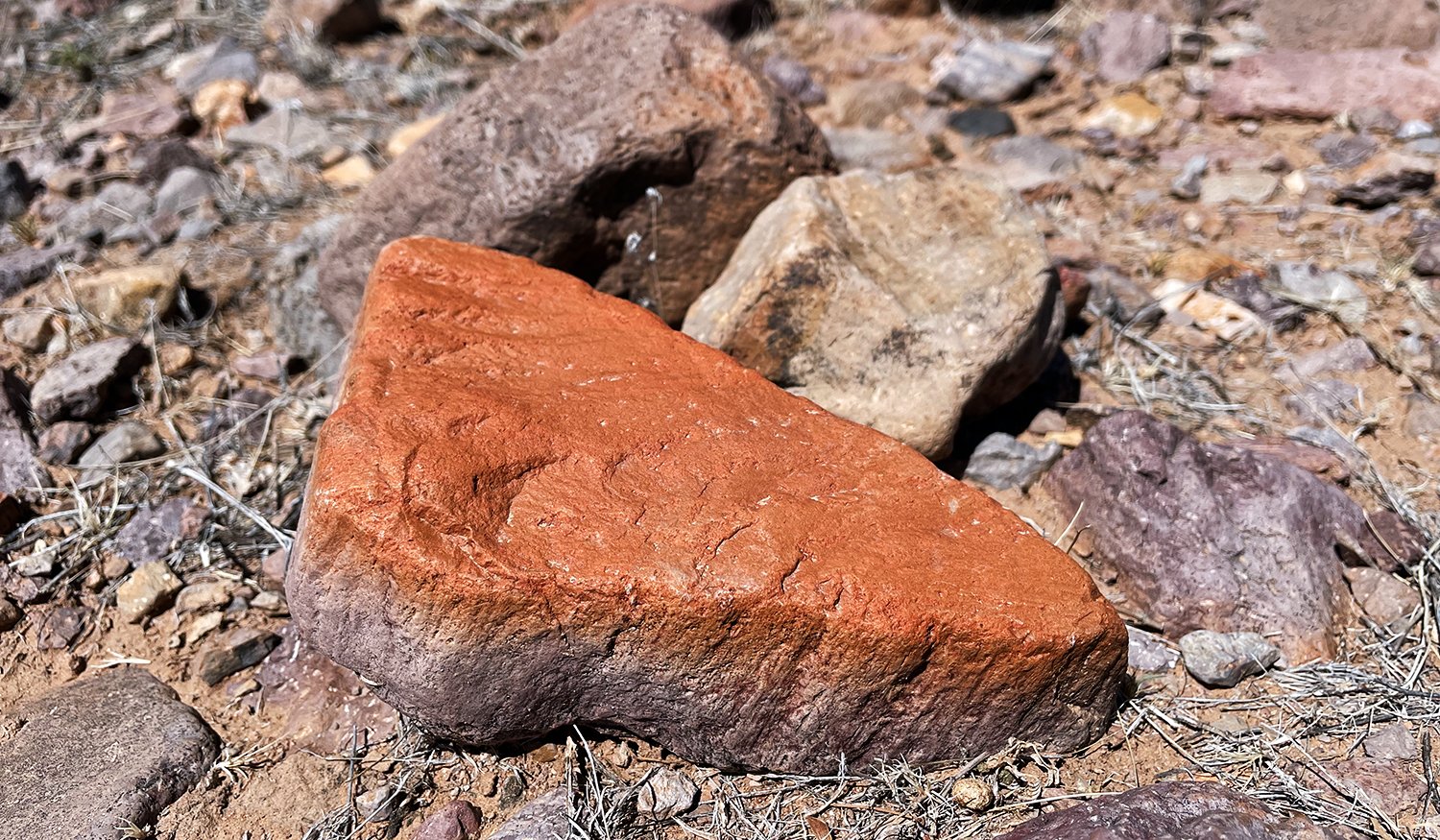Join Quinn on Wednesday evening (September 4, 2024, at 1700 MST) for a talk with Dr. Sheldon Solomon, author of The Worm at the Core: On the Role of Death in Life. Quinn and Sheldon will talk about how artists differ in their response to death anxiety. What can an artist do to harness this powerful psychological phenomenon? Can the knowledge of our impending deaths make us more creative?
The Studio Q Show LIVE! August 31, 2024
Engaging with Themes of Mortality
"Camera Lucida" by Roland Barthes
Join Quinn for a discussion on how artists can explore themes of mortality. The conversation will reference Roland Barthes' book Camera Lucida, which delves into the relationship between photography and death. The wet collodion process, commonly used in 19th-century postmortem photography, is particularly suited to these themes due to its unique aesthetic. Barthes' insights on photography and its connection to death will serve as a central point in this discussion.
"Camera Lucida" is a profound meditation on photography, but it also deeply engages with themes of mortality. Barthes reflects on the nature of photographs as they relate to the passage of time, memory, and death.
Saturday, August 31, 2024, at 1000 MST
Stream Yard: https://streamyard.com/ukhsywxuis
You Tube: https://www.youtube.com/live/SMZ_L8Zrx8I?si=fnfegB_v7KChp_19
You can read Camera Lucida here: CAMERA LUCIDA by ROLAND BARTHES
The Studio Q Show LIVE! August 24, 2024 at 1000 MST
Join Quinn on Saturday, August 24, 2024, at 1000 MST on Stream Yard or YouTube for another discussion about creativity and mortality. This week Quinn is going to address a Francis Bacon quote, "The quality of mortality." How artists struggle within cultures that don't provide sufficient illusions to buffer their existential dread.
Stream Yard (LIVE): https://streamyard.com/rgj2b62es2
YouTube: https://www.youtube.com/live/GDVcCBPu5Fo?si=npOlCTjB1hUZlKJM
The Studio Q Show LIVE! August 17, 2024 at 1000 MST
Greetings!
I hope you can join me this Saturday for a discussion with Jeff Greenberg, PhD, co-author of The Worm at the Core: On the Role of Death in Life.
Jeff will spend the hour with us talking about how our knowledge of death influences our day-to-day living and behavior. We'll tackle what it means to be a creative person in light of our finitude (or impending death). What does creating art do for artists viewed through the lens of terror management? How does it differ from a non-creative person? Are there any advantages or disadvantages to being a creative type when it comes to death anxiety or existential terror? And what's the best way for people to understand and grasp these theories and their implications?
Saturday, August 17, 2024 at 0900 PST, 1000 MST, 1100 CST, 1200 EST, and 1800 CET
Stream Yard (LIVE): https://streamyard.com/pemntyfpd6
YouTube: https://www.youtube.com/live/DmRTUrC8kFY?si=ZJa3lrGAraBwUDCx
The Studio Q Show LIVE! August 3, 2024 at 1000 MST
Join Quinn on Saturday, August 3, 2024, for an hour and explore the relationship between creative and non-creative people and how they cope with mortality. Quinn will cover some of Ernest Becker's thoughts on Otto Rank's breakdown of how artists manage their anxiety about death.
Stream Yard: https://streamyard.com/rdy5fe8ipy
YouTube: https://www.youtube.com/live/FPPpLUQFz7U?si=uJZIftVEZFMVHzHs
The Studio Q Show LIVE! July 20, 2024 at 1000 MST Part 2
Join me on Saturday, July 20, 2024, at 1000 MST for part two of an ongoing examination of the role that mortality plays in creativity.
Stream Yard (live feed): https://streamyard.com/hdccnpxqmj
YouTube: https://www.youtube.com/live/WuIqkBuuggA?si=je73XTzh5ipZN0Kc
This week, Quinn will continue the series on The Creative Mind and Mortality, Part 2." This will address artist's unique perspectives on why they create art and the struggles they face in light of existential dread or mortality. What does it mean to have a "creative practice"? How does creating art help with the fear of death? Do creative people process existential terror differently? If so, how? Ernest Becker's "The Denial of Death" and Otto Rank's book "Art and Artist."
The Studio Q Show LIVE! July 13, 2024 at 1000 MST
I’m back! Join me July 13, 2024, at 1000 MST! Links below!
The Stream Yard link will allow you to join the room on the live show. The YouTube link will allow you to view and send messages on the chat board. You can go to the YouTube link now and click on the bell, which will send you a reminder.
Stream Yard: https://streamyard.com/t5r53p8qtw
YouTube: https://www.youtube.com/live/OPfZS-a50Jw?si=UPm9YE-P4fRR7fDu
If you have any questions, feel free to drop me an email!
“In the City of Crosses” - April 27, 2024
Agreed Madness
It’s our “one month” anniversary today. We’ve been in New Mexico for 30 days, and man, time has whizzed by!!
Between unpacking boxes and running household errands, I’ve been slowly getting back on track to work on my book. I get excited about the thought of actually completing this work. It’s no longer a hope or dream; it’s close to becoming a reality.
“Man literally drives himself into a blind obliviousness with social games, psychological tricks, and personal preoccupations so far removed from the reality of his situation that they are forms of madness—agreed madness, shared madness, disguised and dignified madness, but madness all the same.”
These theories seem simple on the surface, but it takes some deep thinking and evaluation to really understand them and, moreover, to apply them to your life. My hope is that by sharing these ideas and concepts in a book, it will inspire people (especially artists) to engage with these theories and start to share them through their art.
I wrote a while ago about someone asking me if there was a movement in art around “death anxiety.” In other words, Becker’s and Solomon's (et al.) theories could form an entire art movement based on the theories dealing with death anxiety and terror management. This is what happened in existential psychology. There are people working on PhDs in terror management theory and have been for years; why not art? Not unlike impressionism, cubism, dada, etc.
In a lot of ways, all art does address these ideas, but rarely intentionally or consciously. It’s food for thought and a wonderful way to get people to engage with these ideas.
Importance of Creativity
"Both the artist and the neurotic bite off more than they can chew, but the artist spews it back out again and chews it over in an objectified way, as an external, active, work project. The neurotic can’t marshal this creative response embodied in a specific work, and so he chokes on his introversions.
The only way to work on perfection is in the form of an objective work that is fully under your control and is perfectible in some real ways. Either you eat up yourself and others around you, trying for perfection; or you objectify that imperfection in a work, on which you then unleash your creative powers. In this sense, some kind of objective creativity is the only answer man has to the problem of life.
The creative person becomes, in art, literature, and religion, the mediator of natural terror and the indicator of a new way to triumph over it. He reveals the darkness and the dread of the human condition and fabricates a new symbolic transcendence over it. This has been the function of the creative deviant from the shamans through Shakespeare.
Otto Rank asked why the artist so often avoids clinical neurosis when he is so much a candidate for it because of his vivid imagination, his openness to the finest and broadest aspects of experience, and his isolation from the cultural world-view that satisfies everyone else. The answer is that he takes in the world, but instead of being oppressed by it, he reworks it in his own personality and recreates it in the work of art. The neurotic is precisely the one who cannot create." Ernest Becker, The Denial of Death
From the Rocky Mountains to the Chihuahua Desert
We’ve been here just over a week now. So far, we love it. I mean, everything fits and feels good, and we are excited about the future here.
There’s still a lot of work to do, including unpacking, organizing, figuring things out, etc. It’s a process, not an event. We’re on no one’s clock except our own. It’s a wonderful feeling to have a beautiful climate, time to do whatever you want to do, and easy access to most anything you’d need or want. I want to remember how grateful I am for this; I don’t ever want to become desensitized to it. I really appreciate it beyond words.
Jeanne and I trekked out onto some trails behind our house today. We did almost 3 miles and really enjoyed it. There are trails everywhere around here to walk or bicycle on; someone told Jeanne today that there’s one about 2 miles from us that goes south all the way to El Paso, Texas. Wild!
I found myself inspired today by the color and shapes in the desert. I want to paint some of these ideas and start making paint sketches again. And I’m looking forward to getting my darkroom setup again and making some photographs.
Once I’m organized, I’ll begin working on my book again. I really feel like I might be able to finish it this year. That’s my goal. I think with the better environment here, I’ll have more time to devote to it and really make it what I know it can be. About 90% of the writing is complete; it just needs to be edited. And the photography is complete, unless I end up adding anything here. That could happen; I’m not really sure at this point. And I have several paintings that I may include. So, it’s just a matter of carving out time and making it happen. And it will!
“Big Changes,” 3.75” x 5” acrylic, charcoal, newsprint (mixed media).
Radical Mindfulness Why Transforming Fear of Death is Politically Vital
This is a book by Dr. James Rowe that I would recommend reading if you want to understand what I’m trying to address through my artwork and my life in general (my interests). He is addressing Ernest Becker’s theories and terror management directly. I’ve never seen anyone write about the results of death anxiety applied to politics and modern and historical problems directly. My book will address these theories in detail, but I’ve made it personal. I’ve explained how the theories have driven me both creatively and psychologically.
Radical Mindfulness examines the root causes of injustice, asking why inequalities along the lines of race, class, gender, and species continue to exist. Specifically, Dr. James K. Rowe examines fear of death as a root cause of systemic inequalities and proposes a more embodied approach to social change as a solution.
Collecting insights from powerful thinkers across multiple traditions—including black radicals, Indigenous resurgence theorists, terror management theorists, and Buddhist feminists—Rowe argues for the political importance of seemingly apolitical practices such as meditation and ritual. These tactics are insufficient on their own, but when included in social movements fighting structural injustices, mind-body practices can start to transform the embodied fears that give supremacist ideologies endless fuel while remaining unaffected by most political actors.
Radical Mindfulness is for academics, activists, and individuals who want to overcome supremacy of all kinds but are struggling to understand and develop methods for attacking it at its roots.











